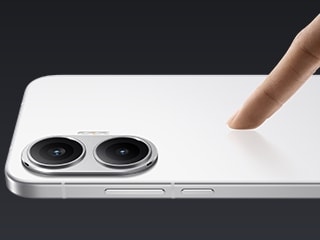- Home
- Science
- Science News
- ISRO Rockets Can Take 400 Satellites to Space at a Time, Says Former Chairman
ISRO Rockets Can Take 400 Satellites to Space at a Time, Says Former Chairman

Photo Credit: ISRO
Noted space scientist G Madhavan Nair on Wednesday said ISRO's feat of launch of 104 satellites in one go was achieved by proven technology, and the rocket has the capability to launch even 400 nano spacecraft.
"This is no new technology. We (Indian Space Research Organisation) started with ten satellites (on board a single rocket), then went to 18 or something; then it's 35. Now it's 100. If you make 3 or 4kg satellite, it (PSLV) can take 300 to 400 satellites at a time," the former ISRO Chairman told PTI.
India today successfully launched a record 104 satellites - all but three of them foreign - from Sriharikota and put them into orbit in a single mission onboard its most dependable Polar rocket.
The PSLV Wednesday first launched the 714kg Cartosat-2 Series satellite for earth observation and then injected 103 co-passenger satellites, together weighing about 664 kg at lift-off.
ISRO Launches PSLV-C37 Rocket: Here's the List of 104 Satellites on Board
"This number (104 satellites) has not demonstrated any new technology; it's a proven technology which is being used," said Nair, apparently refusing to share the euphoria over the launch.
"Cartosat is the real thing, the country needs it; it's the main passenger and the spare capacity (of PSLV) was used to carry this many (the remaining 103) satellites. That's all," said the former Secretary in the Department of Space and ex-Chairman of Space Commission.
"Certainly, it (the launch of 104 satellites on board a single rocket) is a very significant milestone as far as ISRO is concerned. Of course, the technology we have proven earlier. About 30 satellites have been launched (at one go) earlier also. It's an extension of that. But when you count it in numbers, it's huge," he said.
But the usefulness of the satellites that were launched is the most important, according to him.
"One worry is that these (103 satellites) are tiny satellites which at the best can have a life of one or two years; after that it really become space debris. Since they are small in size, they may not be amenable for tracking and finding out their positions and things like that. They become passive. To that extent, that worry is there," he said.
Catch the latest from the Consumer Electronics Show on Gadgets 360, at our CES 2026 hub.
Related Stories
- Samsung Galaxy Unpacked 2025
- ChatGPT
- Redmi Note 14 Pro+
- iPhone 16
- Apple Vision Pro
- Oneplus 12
- OnePlus Nord CE 3 Lite 5G
- iPhone 13
- Xiaomi 14 Pro
- Oppo Find N3
- Tecno Spark Go (2023)
- Realme V30
- Best Phones Under 25000
- Samsung Galaxy S24 Series
- Cryptocurrency
- iQoo 12
- Samsung Galaxy S24 Ultra
- Giottus
- Samsung Galaxy Z Flip 5
- Apple 'Scary Fast'
- Housefull 5
- GoPro Hero 12 Black Review
- Invincible Season 2
- JioGlass
- HD Ready TV
- Laptop Under 50000
- Smartwatch Under 10000
- Latest Mobile Phones
- Compare Phones
- OPPO Reno 15 Pro Max
- Honor Win RT
- Honor Win
- Xiaomi 17 Ultra Leica Edition
- Xiaomi 17 Ultra
- Huawei Nova 15
- Huawei Nova 15 Pro
- Huawei Nova 15 Ultra
- Asus ProArt P16
- MacBook Pro 14-inch (M5, 2025)
- OPPO Pad Air 5
- Huawei MatePad 11.5 (2026)
- Xiaomi Watch 5
- Huawei Watch 10th Anniversary Edition
- Acerpure Nitro Z Series 100-inch QLED TV
- Samsung 43 Inch LED Ultra HD (4K) Smart TV (UA43UE81AFULXL)
- Asus ROG Ally
- Nintendo Switch Lite
- Haier 1.6 Ton 5 Star Inverter Split AC (HSU19G-MZAID5BN-INV)
- Haier 1.6 Ton 5 Star Inverter Split AC (HSU19G-MZAIM5BN-INV)
















